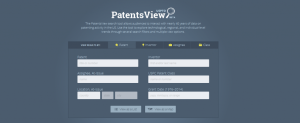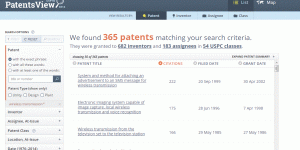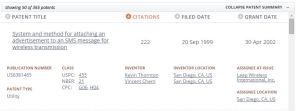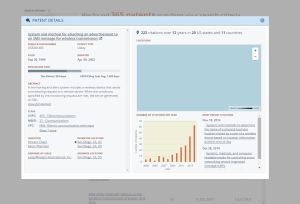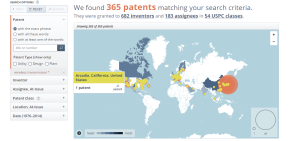AcclaimIP recently announced that it is normalizing patent agent names across its international patent data collections, making it easier for researchers to answer questions like “what law firms are working for specific companies?” or “which technology area does this law firm focus on?”.
In a blog post, AcclaimIP noted that patent agent names have always been inconsistent in raw patent data, with law firms filling patents on behalf of their clients using many different variants of their names. For example, law firm Oblon McClelland Maier & Neustadt has more than 327 variants of its name used in patent fillings while law firm Sughrue Mion PLLC has more than 323 variants, many of which are appended by lawyers’ names.
AcclaimIP seems to have dealt with this issue by updating its AGT (Agent) field code so that it now searches the normalized name of the patent filling entities, while the new AGT_ORIG field code searches the original versions of the agent names. By using the AGT_ORIG field code, users will be able to find patents with a specific firm/attorney combination that may have been lost in the normalization process. All the AGT filters in the tool are based on the normalized variant of the law firm’s name.
According to the blog post from AcclaimIP, Agent data is not usually a required field in a patent application, but in 2015, about 92.4% of all granted US patents still contain AGT data. However, there are some organizations that don’t publish agent data at all including Philips, Verizon, Marvell, Covidien, Siemens, and Western Digital. Also, agent data is no longer published is US patent applications, with the last US patent application containing agent data appearing back in 2011.
The normalization of agent names can help law firms or attorneys get an idea of their clients’ filling activities and allow them to tap in potential revenues. Agent data analysis is a popular topic in patent analytics, so the normalization of agent data is a useful feature for any law firms performing analysis projects related to attorney/agent names.
AcclaimIP has made the feature available to Silver and Gold subscribers only while only Gold subscribers will have access to the charting options that come with the feature.
What do you think of AcclaimIP’s agent name normalization feature? Tell us in the comments below!

This post was contributed by Abhishek Tiwari. The Intellogist blog and Intellogist are provided for free by Landon IP, which is a CPA Global company. Landon IP is a major provider of professional services meeting the needs of the IP community, including patent searches; analytics and technology consulting; patent, legal, and technical translations; and information research and retrieval.
Filed under: Intellogist Updates, Items of Interest, Patent Analysis, Patent Search News, Patent Search Systems, Patent Search Tools | Leave a comment »







